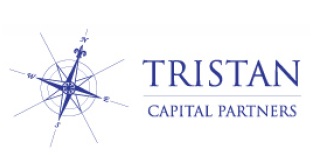The Venture BTR series 04
BTR: Build bridges, solve problems; the new face of development monitoring
The newest residential asset class, build-to-rent (BTR), has captured the minds and funds of an increasing proportion of investors, with a number of institutions moving towards developer-led schemes. And with new opportunity comes new risks, new partnerships and new ways of working.
In order to reap the rewards as smoothly as possible, a new kind of development monitoring is required. A more collaborative approach to the process, where funds can mitigate risk and follow their approval processes, while simultaneously reaping the rewards of the typically more dynamic developer approach.
Institutional funds require a development monitoring partner that not only understands the fund’s internal processes and risk requirements, but also has a good understanding of how developments work and where an investor can take a commercial view.
The new face of development monitoring is one that offers the expertise to navigate the process of BTR investment and monitor the development so that all parties reach their goals in accordance with their own requirements and their own perspective, depending on their appetite for risk and position within the capital stack.
Developer output and agility
Whereas a traditional development surveyor might simply point out a problem, the Venture offering combines development monitoring with extra consultancy, protecting the client investment but also getting the best output and agility from the developer. The new face of development monitoring means aiding the whole process of value release and value creation, from end to end.
Although the perhaps unfamiliar step of partnering with developers can sometimes seem a challenging step for funds, with the right development monitoring partner, this process can be made seamless. Problems are solved through effective communication, with both parties learning along the way.
Most funds purchase sites where there is planning approval in place, and it is essential to determine that the planning approval is implementable. A key element of the monitoring process is to ensure that all conditions are cleanly discharged and documented. Considerations of direct development and the acquisition process for new sites include analysis and development assessment of aspects such as ecology and invasive species, environmental issues such as contamination of the site, including flood risk, along with consideration of site utilities.
Where specific planning requirements are in place for a particular cleared site, for example, an institutional fund may look to exceed the standards set, especially in an area such Net Zero carbon, in order to protect the value of the asset going forward due to the inherent value attributed to achieving Net Zero carbon.
A collaborative, communicative approach
With experience in development monitoring for the BTR sector running the gamut from schemes that range from 150 to 450 beds, Venture is working on contract values of £30m to £100m. The total capital volume of Venture’s BTR development monitoring schemes is £600m, meaning the team is not only steeped in technical expertise, but is also well-placed to understand the value of a collaborative, communicative approach, which guards against misinterpretation and loss of trust.
It’s clear that a more progressive, collaborative style of development monitoring helps ensure that the goals of the institutional fund are met, while maximising the speed, agility and creativity of the developer. Venture works with legal specialists to document the technical and procurement aspects of legal agreements, change management and the practical completion process, rail lines, wind, fire issues, acoustics, cladding specifications, micro-climates and rights of light issues in the case of towers.
Longevity is also a key consideration, since many investments involve capital going into projects from which a long-term return is planned. In some cases, a developer may consider options such as windows that carry a ten-year lifespan, whereas an institutional fund requires a lifespan of double that. Plus, different investor criteria mean the drivers are different according to each project, so the new role of development monitoring is to become a bridge, to facilitate more informed investment decisions.
The key is to draw a balance between the institutional standards that an investor requires, with the agility that developers are able to offer. The most effective development monitors are those who are analytical, rigorous, and well-equipped to navigate a common path, meeting everyone’s requirements and safeguarding a bright BTR future for all.
By Ben Kearns, Venture Project Management
Previously in The Venture BTR Series 03: BTR: The rules, risks and rewards of investment
Up next in The Venture BTR Series 05: An investor’s take on the specification of BTR
Read more on Venture’s work here > Projects Archive – Venture (venture-projectmanagement.co.uk)
Read more about our intelligent building technology IBOS
Read more about our ESG services
Meet the Venture team here > https://bit.ly/3oBYQvM







